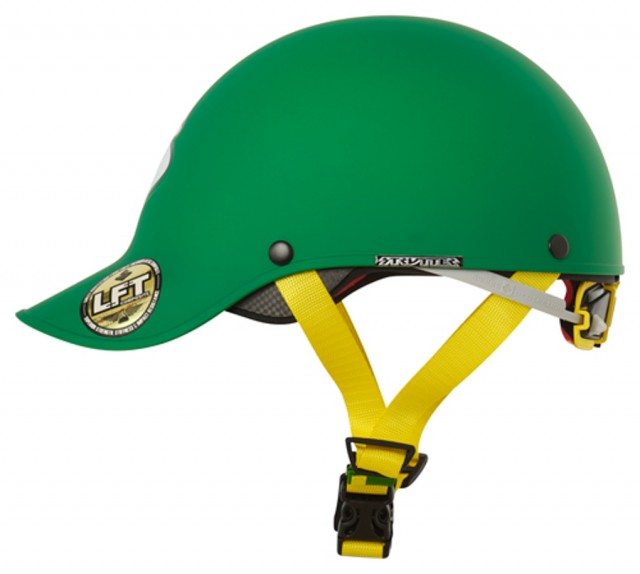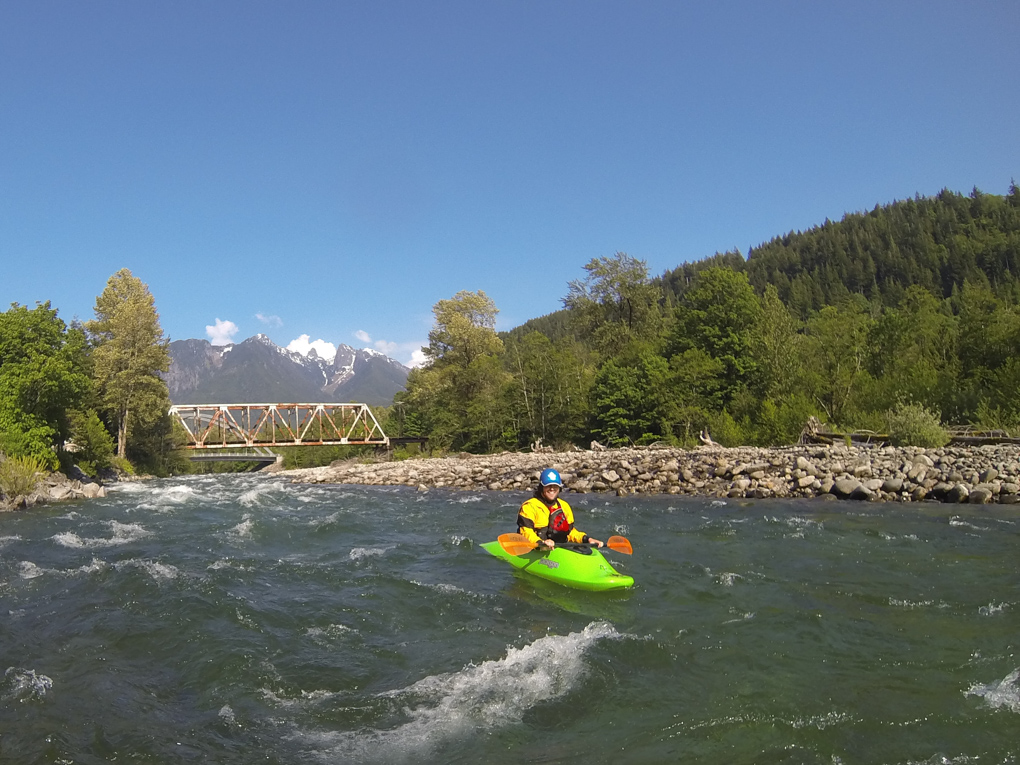
MSRP: $195.95
Size: L/XL
Test Location: Norway
Uses: Kayaking, raft guiding, SUP
Days Tested: 21
Reviewer: 57.5 cm head circumference
Although I usually look for helmets that offer maximum impact protection and coverage, the fact is that I don’t always need that. For some freestyle kayaking and big water river running, sun protection and style can sometimes take precedence over absolute protection.
Same goes for many other rafters, guides, and river SUPers.
For this purpose, Sweet Protection offers their Strutter model, with an integrated sun brim and baseball cap style. It is a classic design that has been on the market for many years now, but the Strutter has undergone several changes in recent years that are worth taking a look at.
Design and Protection
The main point of a helmet like this is to keep the sun out of my eyes and off my face. Inspired by the baseball cap, the Sweet Strutter has a protruding sun brim on the front. Although the brim causes some issues with performance that I’ll get to in a bit, it certainly keeps the sun out of my eyes better than helmets I have used with smaller brims.
Unfortunately, many brimmed helmets do not mute the colors on the underside of the brim. Light reflects from the surface of the water onto the underside of the brim and then reflects into my eyes. Sweet’s matted colors are excellent at preventing this effect. I have been using a black Strutter. Some light still reflects off the brim, but I am not having major issues with glare.
The thermoplastic shell sits on top of a rigid carbon fiber inner half-shell and an EVA foam liner. The construction feels very strong and confidence inspiring.
Despite being a “low volume” helmet, the temple coverage is decent enough that I don’t feel like vital areas in the front of my head or around my face are exposed. The Strutter does not come down very far on the back of my head, which definitely leaves me feeling exposed back there. Then again, this is a low volume helmet so I don’t expect full coverage.
I have not taken any major hits with my most recent Strutter, but it does feel well made. When I say that the helmet “feels well made,” I mean that it is rigid enough that I don’t feel like I am wearing a thin plastic tupperware on my dome. It is not as stiff as models like the Wanderer, but it doesn’t need to be for its intended purpose.
Fit and Sizing
I first wore a Strutter in 2006, and let’s just say the fit kit has changed for the better since then.
My first Strutter’s fit kit consisted of a few large Velcro-on foam pads shaped like fire bolts. Sure they looked cool, but I don’t think science has ever supported flame-shaped fit pads as the most effective method for helmet outfitting. I was never able to achieve a great fit with this system.
The best thing about the current Strutter, compared to other low volume and minimalist whitewater helmets, is its excellent fit system. My 57.5 cm head circumference puts me right in the middle of Sweet’s M/L size, so I was dismayed to receive an L/XL Strutter in the mail. I was extra impressed, however, when I could achieve a great fit anyway just by using the thickest foam pads and tightening the OCCIGRIP all the way. The OCCIGRIP is a ratchet system that Sweet uses to tighten and secure their helmets on the back of the head just above the occipital lobe.
Sure an M/L helmet shell would still fit me better, but it says good things about the fit kit when I can achieve a good fit on an outsized helmet with absolutely zero hassle in less than 5 minutes.
The Strutter won’t fit absolutely everyone, but it can fit a wide range of heads with minimal struggle. The same cannot be said of the WRSI Trident or Shred Ready brimmed models which, although they are cheaper, are more difficult for me to outfit properly. These other helmets often feel like they are sitting on top of my head, instead of really hugging my cranium. The Sweet OCCIGRIP fit system in the Strutter is simple and effective.
The chin strap fit system is easy to adjust. It keeps the helmet in place and feels comfortable under my chin.
The Strutter is aptly named. I mean, this thing looks cool if style is a priority for you. I had a lot of rafting customers last summer comment on how cool the Strutter looks.
Best Uses
I mainly used the Strutter while raft guiding and SUPing last summer in Norway. We had an abnormally sunny summer, so having the extra sun protection of the Strutter was a blessing. For rafters, guides, instructors, and SUP enthusiasts who need head protection but do not expect to spend significant amounts of time with their heads underwater, the Strutter is an excellent choice. The long brim does a good job of keeping out direct and overhead sun, but the slightly shorter/wider brim on the WRSI Trident does a better job of protecting against low-angle sun rays coming from the side.
One downside to such a protruding brim is that I can see it when I am paddling. The brim comes out so far that a little bit of it is visible in the top of my field of view. This is not a huge deal to me, and does not cause a distraction while paddling. I can definitely see, however, that this little detail could bother other people.

I also used the Strutter while playboating and running deep rivers where I didn’t need to worry much about coming into contact with rocks. What I found was that the brim can be frustrating when going for a “hardcore” playboating session. When flipping over a lot in a violent hole or wave, the brim would sometimes catch water and push the helmet up/back on my head. The OCCIGRIP fit system keeps the Strutter in place better than in the old days, but it still does get pushed up and back when confronted with very fast water. I’ve also knocked my knuckles against the protruding brim several times when playboating.
The Strutter is my helmet of choice for mellower surf sessions and running river sections where I feel comfortable and confident, but I don’t really see it as a one helmet quiver for most whitewater kayakers.
Creeking
I’ve seen people using this helmet for creeking, and it is definitely possible. The Strutter offers adequate temple protection and a great fit, so using it for creeking is by no means suicidal. Personally, however, I would choose helmets that offer more coverage and a stouter construction when paddling difficult, shallow water. Sweet’s marketers assert that the protruding brim protects against rocks, claiming that rocks will hit the brim instead of your face. I don’t really buy into this line of thinking. I would rather not have protruding helmet material hitting rocks in the first place, and a full coverage helmet protects my forehead better anyway.
The Sweet Wanderer is $55 cheaper than the Strutter and offers stiffer construction, the same fit kit, and more coverage for those looking to venture into shallow creeks and more challenging whitewater. Lots of people take the Strutter on hard runs, but I use another helmet when paddling river sections that push my abilities.
Bottom Line
Sweet has made major improvements to the Strutter since its first incarnations. Fit is an integral part of helmet safety, and the Strutter is the best low volume helmet I have used in that respect. The big brim kept the sun out of my eyes and off of my face during long days at work as a raft guide, or during sunny river runs.

Can’t I use it in tough whitewater kayaking event?